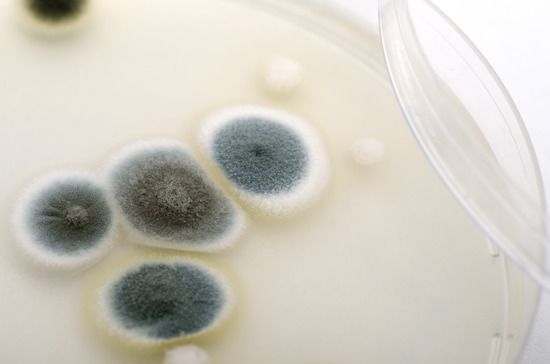By Vincent Marone
One of the most frequently asked questions about mold is, “What is the difference between mold and mildew?” While mold and mildew have many similarities, including the conditions in which each can grow and thrive, striking differences can result in damaged property or substantial health risks to those who come into contact with it.
Similarities
Both mold and mildew are types of fungus that thrive in moist, humid conditions where a light source is either poor or non-existent. Both grow when spores, or seeds, find their way into suitable environments for colonies to grow. Both need porous, organic material to grow on (ie. wood, fabric, paper, clothing, drywall, insulation, carpet, padding, upholstery, foods, etc.) but usually cannot grow on synthetic materials (ie. plastic, most metal-based products).
Differences
The main difference between mold and mildew are in appearance. Mildew is usually a white or gray substance that is powdery or fuzzy in texture. Powdery mildew is usually found on the leaves of plants, making it appear that the plants are “sick.” White or gray splotches will appear as mildew begins to feed on the organic cells of the plant. Mold is usually black, yellow, or green in color and extremely fuzzy or slimy in texture. Severe mold growth will look moss or plant-like and can begin to eat away at the cellular integrity of its host. Mold can also be extremely toxic for their hosts and for the people who come into contact with it. As mold grows, the fungi release mycotoxins into the environment. Long-term exposure to these mycotoxins can cause a variety of symptoms such as skin irritation, eye irritation, shortness of breath, high fevers, and other allergic reactions.
Where Mildew and Mold Can Be Found
Mildew and Mold are everywhere in the environment. However, when large quantities of spores begin to thrive in an indoor habitat, indoor air quality can be harmful to inhabitants of the property. Mildew and mold are most commonly found in kitchens, bathrooms, basements, crawl spaces, attics, and garages. These areas of a home or office generally foster the right type of environment for the fungus to grow.
What To Do When Mildew and Mold are Found?
Firstly, property owners must understand the dangers of mildew and mold exposure. Long-term health issues like asthma can be triggered by exposure to these types of fungus. Since mold and mildew can spread their spores when being contacted, property owners must consider hiring professional mold removal contractors to handle the remediation process. Reputable mold remediation services will work only with an independent industrial hygienist. An industrial hygienist will test for mold spore concentration both before and after the mold removal process has started, providing the property owner with accurate test results. To prevent mold and mildew growth, try to keep typically damp areas dry by running a dehumidifier or allowing air to circulate through the area. Rooms like bathrooms and kitchens should be cleaned and sanitized frequently to prevent spores from finding a suitable place to grow mold or mildew. Once mold and mildew are found, contact your local mold removal specialist for information or to schedule an appointment for safe, healthy remediation.
Vincent Marone
Mold Specialist
http://www.si-restoration.com


3 comments
Mix one kilo of uniodised salt into 9 litre bucket of water. Wash the affected surface, wait until the salt crust forms and brush off with a soft broom. Please take care that the salt does not end up in the garden.
mould cleaning Brisbane and Gold Coast
Tiny mold spores exist everywhere, indoor and outdoors as it’s impossible to remove all mold from a home or business. Following these tips would help you to remove mold as quick as possible. Mold Removal Tips
I have mold growing in a jar in my fridge. It is growing in a distinctive pattern and has not changed shape since it was very small. It is grey in the middle and has three white arms equally spaced growing from the center. I am just curious. I have a photo.